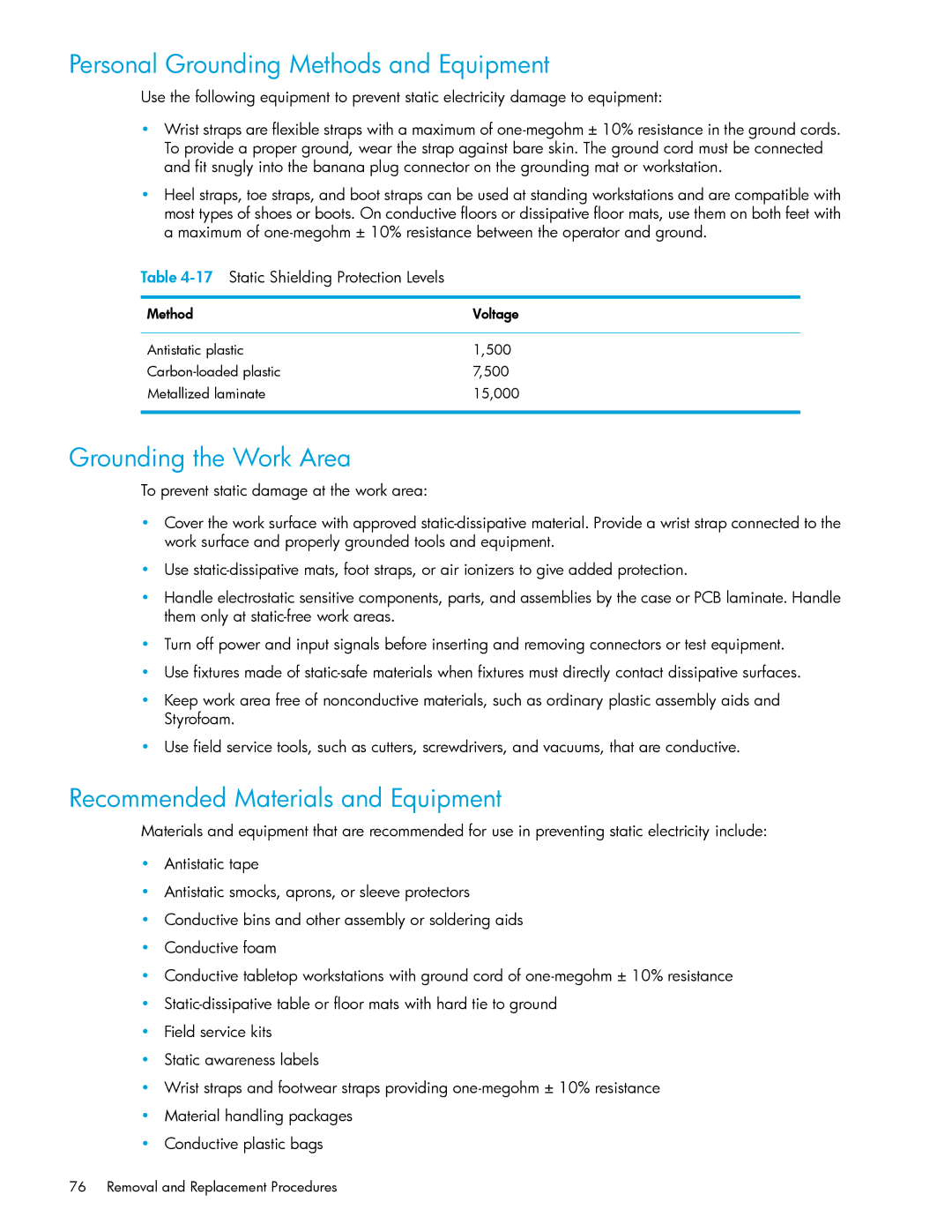Personal Grounding Methods and Equipment
Use the following equipment to prevent static electricity damage to equipment:
•Wrist straps are flexible straps with a maximum of
•Heel straps, toe straps, and boot straps can be used at standing workstations and are compatible with most types of shoes or boots. On conductive floors or dissipative floor mats, use them on both feet with a maximum of
Table
Method | Voltage |
|
|
Antistatic plastic | 1,500 |
7,500 | |
Metallized laminate | 15,000 |
|
|
Grounding the Work Area
To prevent static damage at the work area:
•Cover the work surface with approved
•Use
•Handle electrostatic sensitive components, parts, and assemblies by the case or PCB laminate. Handle them only at
•Turn off power and input signals before inserting and removing connectors or test equipment.
•Use fixtures made of
•Keep work area free of nonconductive materials, such as ordinary plastic assembly aids and Styrofoam.
•Use field service tools, such as cutters, screwdrivers, and vacuums, that are conductive.
Recommended Materials and Equipment
Materials and equipment that are recommended for use in preventing static electricity include:
•Antistatic tape
•Antistatic smocks, aprons, or sleeve protectors
•Conductive bins and other assembly or soldering aids
•Conductive foam
•Conductive tabletop workstations with ground cord of
•
•Field service kits
•Static awareness labels
•Wrist straps and footwear straps providing
•Material handling packages
•Conductive plastic bags
76 Removal and Replacement Procedures
